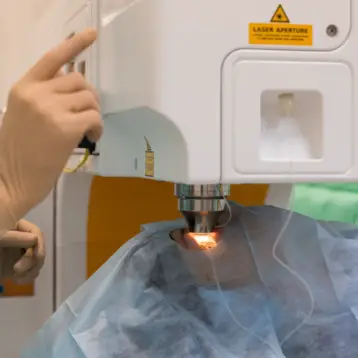|
Until now, scientists could only measure electric fields from a cell’s membrane. Although these measurements have been useful in fields such as brain research, they do not enable mapping the electric fields within cells. Kopelman’s development enables researchers to insert several voltmeters inside a living cell and create 3-D mapping of the cell’s electric field. As opposed to what was previously assumed, very strong electric fields are found inside living cells. An electric field as strong as 15 million volts per meter was measured by Katherine Tyner and Martin Philbert from the National Institute of Health (NIH). For comparison, the electric field under a power transmission line is about 10,000 volts per meter and in an average home it’s about five to ten volts per meter. The functionality of the cells’ electric field is still being studied.
The tiny voltmeter is about 30 nanometers in diameter and it changes the light spectrum in response to electric fields. One reads the voltmeter by illuminating it with blue light and reading the amount of red and green light it emits. The voltmeter is based on a certain dye that changes its light spectrum in response to changes in the electrical field surrounding it. The dye is fixed to a small nano-sized micelle (a fatty structure) that can be easily injected into a cell.
More research must be carried out in order to understand the function of the electric field in the cell. The researchers speculated that this discovery might have something to do with the development of cancer and of some neuronal disorders like Alzheimer’s disease. The new nanoscale voltmeter has many more potential applications, and can be used as a component of other nanoscale devices.
TFOT recently covered several other innovative medical technologies, including the first low-intensity MRI scan of a human brain developed by a research group at the Los Alamos National Laboratory in New Mexico, new biosensors designed to help monitor physiological signs developed at the University of Arkansas, and MEMS-based confocal microscopy technology developed at Stanford University.
More information about the new voltmeter and the related research can be found on the University of Michigan news page.










